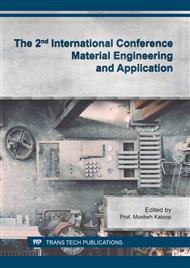p.3
p.9
p.14
p.19
p.24
p.30
p.36
p.41
New Developments in Scanning Microelectrochemical Techniques: A Highly Sensitive Route to Evaluate Degradation Reactions and Protection Methods with Chemical Selectivity
Abstract:
The scanning electrochemical microscope (SECM) offers a highly sensitive route to evaluate degradation reactions and protection methods with chemical selectivity by using ion-selective microelectrodes as tips, thus operating SECM potentiometrically. Spatially resolved imaging of electrochemical reactivity related to each component of the investigated material can thus be effectively monitored selectively both in situ and in real time. The applicability of this method has been illustrated using a practical example of a metal-coating system, consisting in the exposure of cut edges of coil-coated galvanized steel to aqueous saline environment. In this contribution, localized pH and zinc(II) ion distributions originated around cut edges of coil coated steel immersed in 1 mM NaCl solution are shown.
Info:
Periodical:
Pages:
19-23
Citation:
Online since:
January 2018
Price:
Сopyright:
© 2018 Trans Tech Publications Ltd. All Rights Reserved
Share:
Citation:


